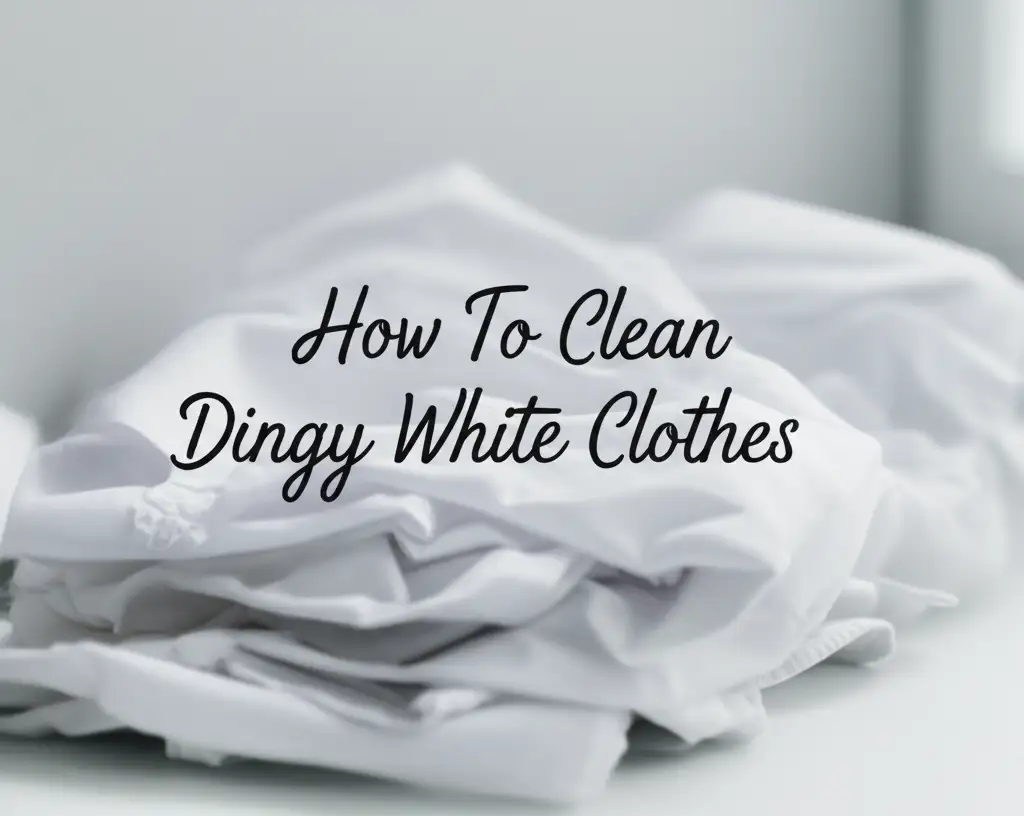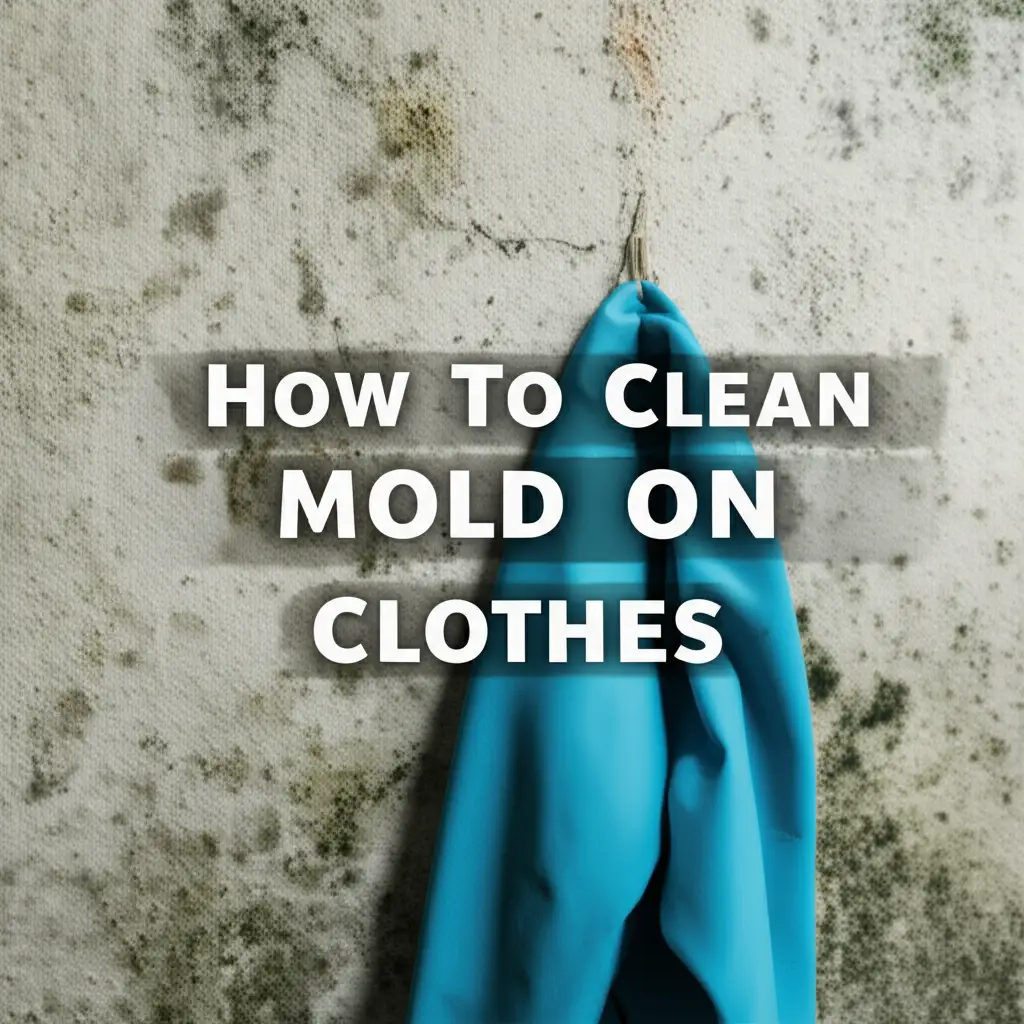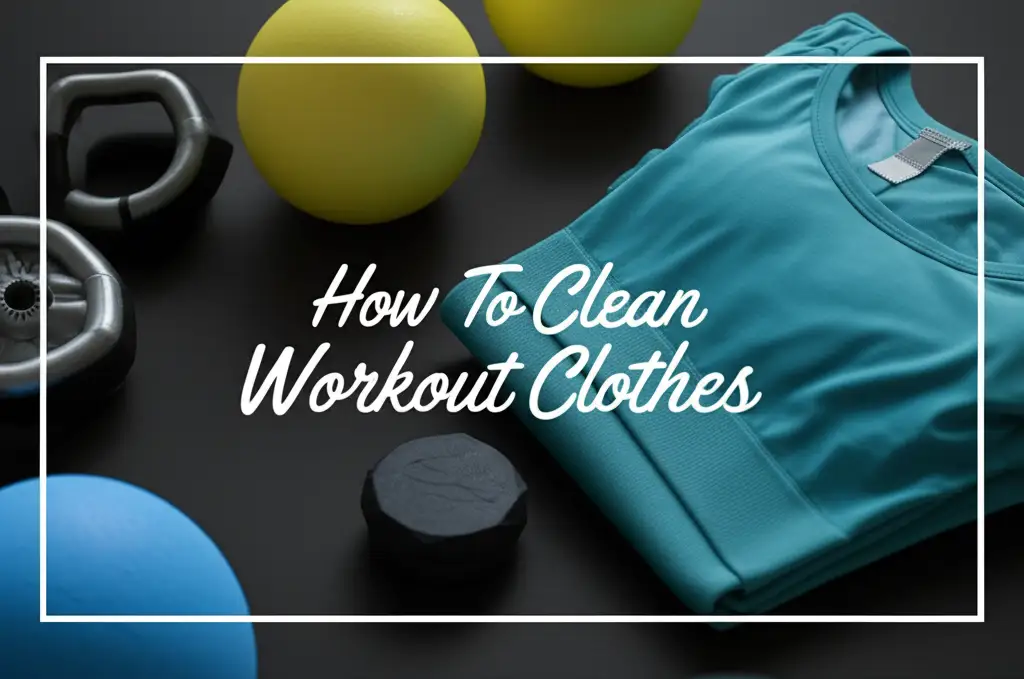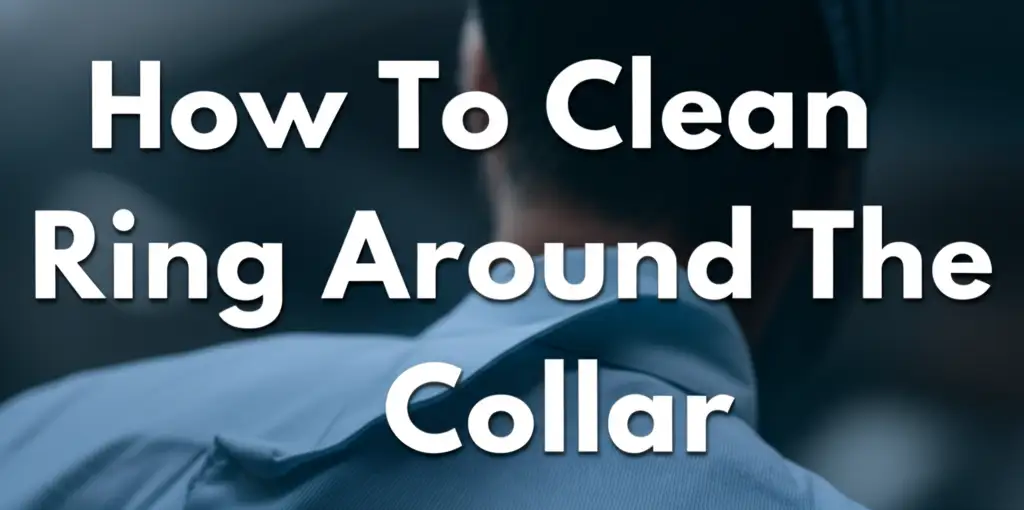· Laundry & Fabric Care · 15 min read
How To Clean Dingy White Clothes

Restore Brilliance: How To Clean Dingy White Clothes
It is truly frustrating to see your favorite white shirts, towels, or bedsheets lose their crisp brightness. Over time, whites can turn dull, yellow, or grey. This happens due to various factors like hard water minerals, detergent residue, and everyday grime. Do not worry, because I am here to help you bring them back to life.
This guide will show you how to clean dingy white clothes effectively. We will explore simple yet powerful methods using common household items. You will learn to tackle discoloration and restore that fresh, vibrant white. Get ready to transform your laundry pile and enjoy truly clean whites again!
Takeaway
- Understand what causes white clothes to become dingy.
- Use natural alternatives like baking soda, vinegar, and lemon for whitening.
- Pre-soak dingy items to loosen embedded dirt and stains.
- Adjust your washing habits to prevent future dinginess.
- Target yellowing with specific, effective treatments.
How do you clean dingy white clothes?
You can clean dingy white clothes by pre-soaking them in solutions like baking soda, vinegar, or oxygen bleach. Follow with a hot water wash using a quality detergent and an additional whitening agent. Always sort whites separately and avoid overloading your washing machine.
Understanding Why White Clothes Get Dingy
Have you ever wondered why your once-bright white clothes start to look dull and lifeless? There are several common culprits behind dingy white clothes. Knowing these reasons helps you address the problem effectively. I have found that identifying the cause makes cleaning much easier.
One primary reason is mineral buildup from hard water. Tap water contains minerals like calcium and magnesium. These minerals can settle on fabric fibers during washing. Over time, they create a grey or yellow film on your white items. This buildup makes clothes feel stiff and appear less vibrant.
Another common cause is insufficient rinsing or detergent residue. If your washing machine does not rinse clothes properly, soap particles can stay in the fabric. These residues attract dirt and grime, leading to dinginess. Using too much detergent can also contribute to this problem. I always make sure my machine finishes its rinse cycle thoroughly.
Transfer of dyes from colored clothes is also a major issue. Washing whites with colors, even light ones, can cause dye particles to transfer. This leads to an overall dull or tinted appearance in your white laundry. It is crucial to always sort your laundry correctly. I never mix my whites with anything else.
Body oils, sweat, and everyday dirt also contribute significantly. These substances accumulate on clothes, especially in areas like collars and underarms. They combine with detergent residues and hard water minerals. This forms stubborn stains and a generalized dingy look. Understanding these factors is the first step to truly clean white fabrics.
Essential Supplies for Whitening Dingy Clothes
When tackling dingy white clothes, having the right supplies makes all the difference. You do not need a vast arsenal of expensive products. Many effective whitening agents are likely already in your pantry. I find it convenient to use everyday items for powerful cleaning.
Traditional bleach is a powerful whitener. Chlorine bleach works well for cotton fabrics. Always check your garment’s care label before using it. Bleach can weaken certain fibers, so use it carefully. Oxygen bleach, also known as non-chlorine bleach, is a gentler alternative. It is safe for most fabrics and colors, making it versatile for many laundry loads.
Baking soda is a fantastic natural whitener and deodorizer. It helps to loosen dirt and grime from fabric fibers. You can add it directly to your wash cycle or use it as a pre-soak. Baking soda boosts detergent performance. It makes your whites look brighter without harsh chemicals.
White vinegar is another household hero for laundry. It acts as a natural fabric softener and helps remove detergent residue. Vinegar also breaks down mineral deposits from hard water. This helps prevent future dinginess. I often add a cup of vinegar to my rinse cycle. It makes my clothes feel softer and look cleaner.
Lemon juice offers natural bleaching properties due to its citric acid. It works well on yellowed white clothes. You can combine lemon juice with sunlight for an extra boost. This method is gentle on fabrics. It leaves a fresh scent. For specific issues like yellowing, products designed for cleaning white leather that has yellowed might offer transferable insights on discoloration.
Pre-Soaking Techniques for Stubborn Dinginess
Pre-soaking is a critical step for how to clean dingy white clothes effectively. It allows cleaning agents to penetrate fabric fibers. This loosens deeply embedded dirt, stains, and accumulated residues. Skipping this step often leaves clothes looking less than perfectly white. I always pre-soak my very dingy items.
Baking Soda Pre-Soak
A baking soda pre-soak is excellent for general dinginess and odors. Fill a large basin or bathtub with warm water. Add half a cup to a full cup of baking soda. Stir until the baking soda dissolves completely. Submerge your dingy white clothes in the solution. Make sure all items are fully saturated. Let them soak for at least four hours, or even overnight for very dingy items. After soaking, drain the water. Then wash the clothes as usual with your regular detergent.
White Vinegar Pre-Soak
White vinegar is especially good for hard water buildup and softening fabrics. Mix one cup of white vinegar with one gallon of warm water in a tub. Place your white clothes into this mixture. Ensure they are fully submerged. Let them soak for at least 30 minutes to an hour. For severe dinginess or yellowing, you can extend the soak to several hours. The vinegar helps to break down mineral deposits. It also neutralizes odors. Following the soak, proceed with a normal wash cycle. I often use this method for towels and bedsheets.
Oxygen Bleach Pre-Soak
Oxygen bleach is a powerful, yet gentle, pre-soak option. It is color-safe, unlike chlorine bleach, and works on a variety of fabrics. Dissolve the recommended amount of oxygen bleach powder (check product instructions) in a bucket or tub of warm water. Submerge your white garments completely. Allow them to soak for at least a few hours. For extremely dingy items, an overnight soak can work wonders. This method is excellent for lifting stubborn grime and brightening dull whites. It works effectively on items like all-white Converse shoes that have seen better days.
Always remember to check garment care labels before pre-soaking. Some delicate fabrics might not tolerate long soaks or hot water. Choose the pre-soak method that best suits the fabric type and the level of dinginess. Pre-soaking gives your detergent a head start. It leads to much brighter results.
Natural Whitening Solutions: Beyond Bleach
While bleach is effective, many people prefer natural alternatives for how to clean dingy white clothes. These methods are gentler on fabrics and the environment. They use common household items that often do not cost much. I enjoy using these natural options for a fresh, clean result.
Lemon Juice Power
Lemon juice is a natural bleaching agent. Its citric acid helps break down stains and brighten fabrics. You can add half a cup of lemon juice to your wash cycle along with your detergent. For a powerful pre-treatment, combine lemon juice with sunlight. Fill a basin with hot water and add half a cup of lemon juice. Soak your dingy whites for a few hours. Then, hang them outside in direct sunlight to dry. The sun’s UV rays amplify the lemon’s whitening effect. This method works wonders on yellowed areas.
Hydrogen Peroxide Boost
Hydrogen peroxide is a safe and effective whitener. It is a mild oxygen-based bleach. Add half a cup of 3% hydrogen peroxide to your washing machine’s detergent dispenser or directly into the wash drum. Use it along with your regular laundry detergent. This boost helps to brighten whites and remove light stains. It is safe for most fabrics and colors, making it a versatile option. I find it excellent for everyday laundry.
Borax for Brightness
Borax, or sodium borate, is a mineral that acts as a powerful laundry booster. It helps to soften hard water, which prevents mineral buildup on clothes. Add half a cup of borax to each load of white laundry. Sprinkle it directly into the wash drum before adding clothes. Borax works with your detergent to lift dirt and make whites appear much brighter. It also helps in deodorizing fabrics. Borax is a time-tested solution for improving laundry results.
These natural solutions provide effective ways to whiten your dingy white clothes without harsh chemicals. They are gentle alternatives that can deliver impressive results. Combining these methods or using them regularly can help maintain the brightness of your whites. They also make your laundry routine more eco-friendly.
Targeting Yellowed White Clothes
Yellowing is a common issue with white clothes. It can be caused by sweat, body oils, hard water, or even too much detergent. Knowing how to target yellowed white clothes specifically is key. This helps restore their original crispness. I have found certain methods work best for this particular problem.
One effective solution for yellowed white clothes is a baking soda and vinegar paste. Mix a quarter cup of baking soda with enough white vinegar to form a thick paste. Apply this paste directly to the yellowed areas, especially underarms or collars. Let the paste sit on the fabric for about 30 minutes. The baking soda absorbs odors and lifts stains. The vinegar helps break down mineral deposits. After treatment, wash the item as usual.
Another powerful yellowing treatment involves dish soap, baking soda, and hydrogen peroxide. This mixture targets oil-based stains that contribute to yellowing. Combine one part dish soap, one part baking soda, and two parts hydrogen peroxide. Mix them until you get a paste. Spread this paste over the yellowed areas. Let it sit for one to three hours, or even overnight for stubborn yellowing. The dish soap cuts through grease. The baking soda helps abrade the stain. The hydrogen peroxide whitens. Then, wash the garment in hot water.
For stubborn yellowing due to age or bleach damage, consider a color remover. These products are designed to strip away unwanted dyes or discoloration. Always test a small, inconspicuous area first. Follow the product instructions carefully. They can be very effective but must be used with caution. I only use these as a last resort.
Sunlight is also a natural whitener for yellowed clothes. After washing, hang your yellowed white items outside in direct sunlight. The sun’s UV rays have a natural bleaching effect. This works particularly well for natural fibers like cotton. Be mindful that direct sun can sometimes weaken delicate fabrics. However, for most sturdy whites, it is a great, free option. This is similar to how UV light helps brighten white cabinets that have yellowed.
Machine Washing Strategies for Brighter Whites
Proper machine washing techniques are essential for how to clean dingy white clothes and keep them bright. It is not just about what products you use. How you wash your laundry also plays a huge role. I have developed a routine that consistently yields brighter whites.
First and foremost, always sort your laundry meticulously. Never wash whites with colors, even light pastels. Dyes can transfer from colored fabrics to white ones during the wash cycle. This causes a dull, dingy appearance. I always have a separate hamper just for whites to avoid any accidental mixing.
Use the hottest water temperature safe for your fabric. Hot water is more effective at dissolving detergents. It also helps to lift dirt and kill bacteria. Always check the garment’s care label. While most cotton whites can handle hot water, synthetics or delicate blends may require warm or cool water. Adjust your settings based on the fabric type.
Avoid overloading your washing machine. Clothes need space to move freely in the drum. This allows water and detergent to circulate properly. When the machine is too full, dirt and detergent residue can redeposit onto the clothes. This leaves them dingy. I always load my machine loosely. This ensures proper cleaning and rinsing.
Add a laundry booster to your wash cycle. Besides detergent, boosters significantly enhance whitening. Options include half a cup of baking soda, half a cup of white vinegar, or the recommended amount of oxygen bleach. Add baking soda or oxygen bleach to the detergent dispenser. Pour white vinegar into the fabric softener dispenser. These boosters enhance cleaning power. They also help combat hard water effects.
Ensure a thorough rinse cycle. Sometimes, detergent residue is the culprit behind dinginess. If your machine has an extra rinse option, use it for whites. This helps flush out all traces of soap. Cleaner rinsing means brighter clothes. These machine washing strategies make a big difference in maintaining vibrant whites.
Maintaining White Clothes: Prevention Tips
Once you learn how to clean dingy white clothes, the next step is prevention. Keeping your whites bright from the start saves you time and effort later. A few simple habits can make a huge difference. I follow these tips to ensure my whites stay sparkling.
Always separate whites from colors before washing. This is the golden rule of white laundry care. Even a single colored sock can bleed dye and turn an entire load of whites dingy. I use a separate laundry hamper just for white items. This makes sorting quick and easy before wash day.
Wash white clothes frequently. The longer dirt and body oils sit on white fabric, the harder they are to remove. This leads to permanent dinginess and yellowing. Washing whites after every wear or every few wears prevents grime from setting in. Fresh stains are always easier to treat.
Use the right amount of detergent. More detergent does not mean cleaner clothes. In fact, too much detergent can leave a residue on fabric fibers. This residue attracts dirt and can lead to dinginess. Follow the detergent manufacturer’s recommendations. Adjust for load size and water hardness.
Avoid using too much fabric softener. While fabric softeners make clothes feel soft, some can leave a residue. This residue can trap dirt and contribute to yellowing over time, especially on white towels. I often skip fabric softener for whites. Instead, I use a cup of white vinegar in the rinse cycle for natural softening.
Treat stains immediately. Fresh stains are much easier to remove than old, set-in ones. Keep a stain remover handy for quick action. Blot the stain, do not rub it. Then pretreat the area before washing. This prevents the stain from permanently dulling your white fabric.
Clean your washing machine regularly. Detergent buildup, hard water minerals, and mildew can accumulate inside your washing machine. These residues can then transfer to your clothes during washing, making them dingy. Run an empty hot water cycle with white vinegar or a washing machine cleaner monthly. This keeps your machine clean and your whites bright. Just as you’d clean mildew from clothes, clean your machine to prevent it from affecting your laundry.
FAQ Section
How often should I whiten my white clothes?
You do not need to whiten every time you wash. Whiten your white clothes as needed, perhaps every few washes or when you notice them starting to look dingy. Regular preventive measures like sorting and proper washing can minimize the need for frequent intense whitening treatments. Over-whitening can sometimes damage fabric fibers.
Can I use chlorine bleach on all white clothes?
No, you cannot use chlorine bleach on all white clothes. Chlorine bleach is safe for cotton and linen but can damage synthetic fibers like polyester, spandex, or rayon. It can also yellow silk, wool, and certain blends. Always check the care label for a triangle symbol, which indicates if bleach is safe.
Is it safe to mix baking soda and vinegar for laundry?
Yes, it is safe to mix baking soda and vinegar for laundry. When combined, they create a fizzing reaction, which helps lift dirt and odors. However, it is more effective to use them sequentially. Add baking soda to the wash cycle, then add vinegar to the rinse cycle. This maximizes their individual cleaning benefits.
What causes yellow armpit stains on white shirts?
Yellow armpit stains result from a reaction between your antiperspirant or deodorant ingredients and sweat. Aluminum compounds in antiperspirants are often the main culprits. These compounds bond with salts and proteins in sweat. This creates a yellow buildup on the fabric over time.
Can hard water make my white clothes dingy?
Yes, hard water is a common cause of dingy white clothes. Hard water contains high levels of minerals like calcium and magnesium. These minerals deposit on fabric fibers during washing. Over time, they create a grey or yellow film. Using water softeners or laundry boosters can help combat this issue.
How can I remove mildew smell from dingy white clothes?
To remove mildew smell from dingy white clothes, first pre-soak them in a solution of white vinegar and water. Use one cup of vinegar per gallon of water. Let them soak for an hour or more. Then, wash the clothes in hot water with detergent and an added boost of baking soda or oxygen bleach. Ensure items are fully dry before storing.
Conclusion
Bringing your dingy white clothes back to their original brilliance is easier than you think. You now have a comprehensive guide to restore their brightness. We have explored everything from understanding the causes of dinginess to applying powerful pre-soaking and washing techniques. Remember, a little effort goes a long way in maintaining vibrant whites.
From natural solutions like baking soda and lemon to specific strategies for yellowing, you have the tools. Consistency in your laundry routine is key. By sorting correctly, using appropriate temperatures, and pre-treating stains, you can keep your whites sparkling. Say goodbye to dull, lifeless garments. Embrace a laundry routine that truly delivers. Start transforming your laundry pile today and enjoy truly clean, bright white clothes once more.
- white clothes
- laundry tips
- clothing care




